One approach that may be familiar to practitioners in Queensland is the Reunification Pyramid, a model developed in the Central Queensland region. The Reunification Pyramid seeks to describe reunification as a process rather than a goal by outlining steps that can be taken to move towards returning a child safely back to the care of their parent or parents. The process is not linear; rather all elements of the pyramid need to be in play to explain and inform decision making. The model seeks to guide and facilitate change in a family towards a specific goal – reunification.
The Reunification Pyramid can:
- inform planning and intervention
- promote a consistent approach to reunification
- help avoid logical pitfalls and errors of reasoning by focusing thoughts and actions meaningfully
- facilitate change towards a specific goal
- prompt practitioners to pay attention to the progress of reunification and the role of the network in that process with a family.
The Framework for Practice guides practitioners to understand the impact of the past while staying focused on the present and future and the Reunification Pyramid enshrines this. It is a practice approach that draws connections between a traditional case management model of child protection practice – assessment, planning and review – and a growing understanding of the impact of trauma and attachment. Consider if the trauma a parent has experienced themselves remains unresolved, or psycho-emotional needs remain unmet. How does this cause or influence the social and personal complexities encountered by Child Safety? Rather than becoming caught in a cycle of practice that involves referring parents back to the same ineffective programs, think about interventions that promote healing and build relationships; ones which address the source of the presenting problems.
How the reunification pyramid works
The Reunification Pyramid can be used to visualise what a reunification process may look like. The pyramid supports a gradual approach, where the focus is to start with addressing the core safety concerns for the child and work towards reunification by building relationships and growing acts of protection through increasing family contact and parenting responsibility. The pyramid offers a way to organise thoughts around how to work towards reunification by bringing together practice wisdom and research in a coherent approach to provide a simple way to explain complex concepts.
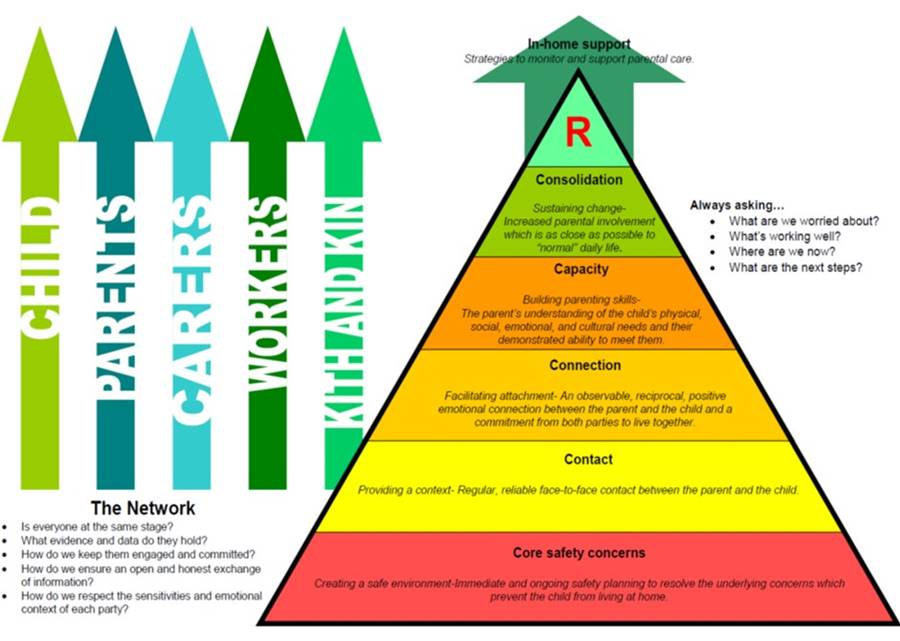
Use the model to:
- systemically explore cases and situations in case discussions and supervision
- explain the reunification process in discussions with parents, carers and children and the strategies and measures which will be developed with them
- identify specific outcomes, actions and measures in family group meetings and case planning forums
- identify progress and/or impediments in review meetings
- consider how the situation looks from a child’s point of view.
Take a closer look
The following tables outline the key focus points, critical questions and evidence of change to consider at each stage of the Reunification Pyramid:
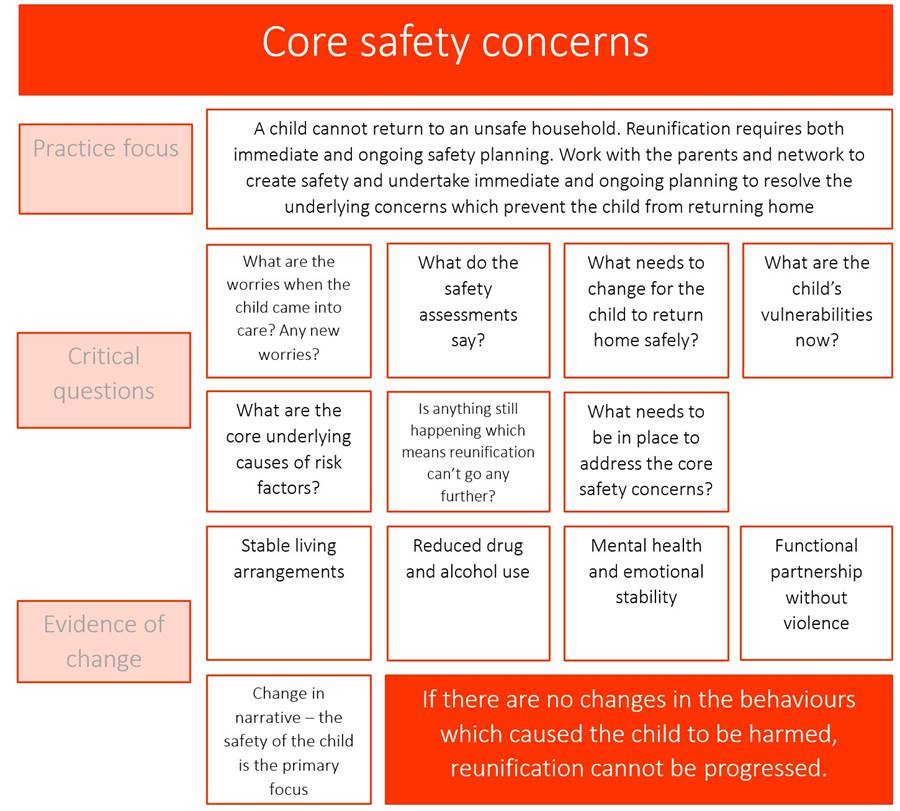
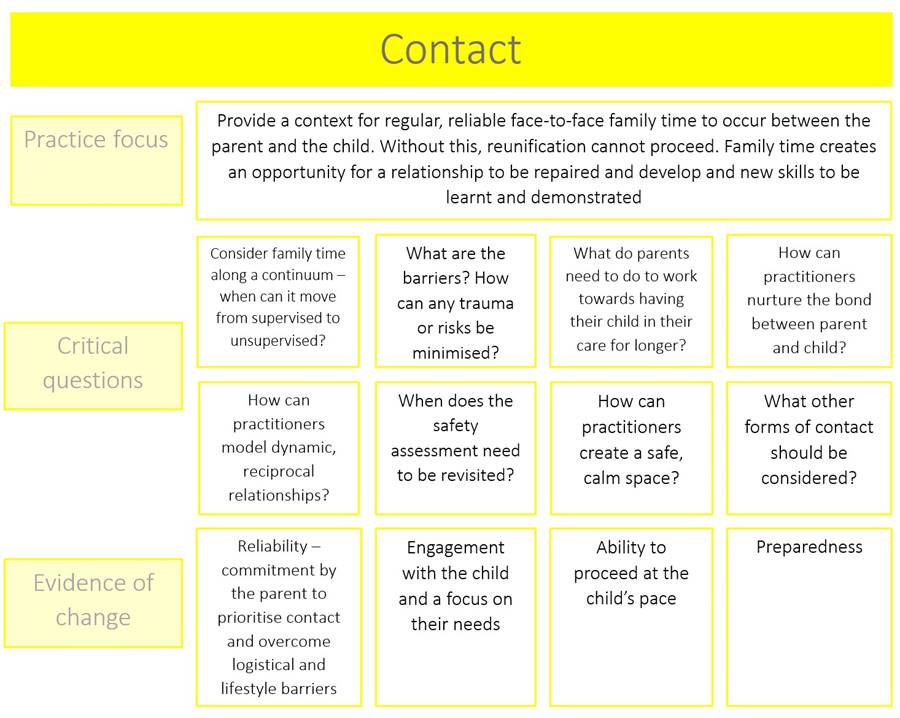

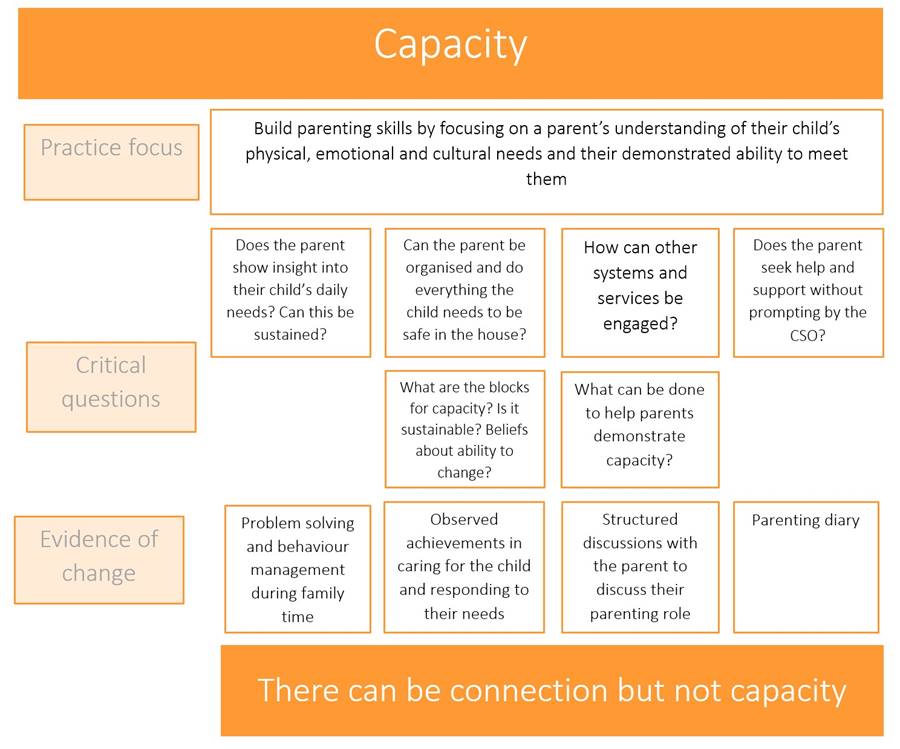
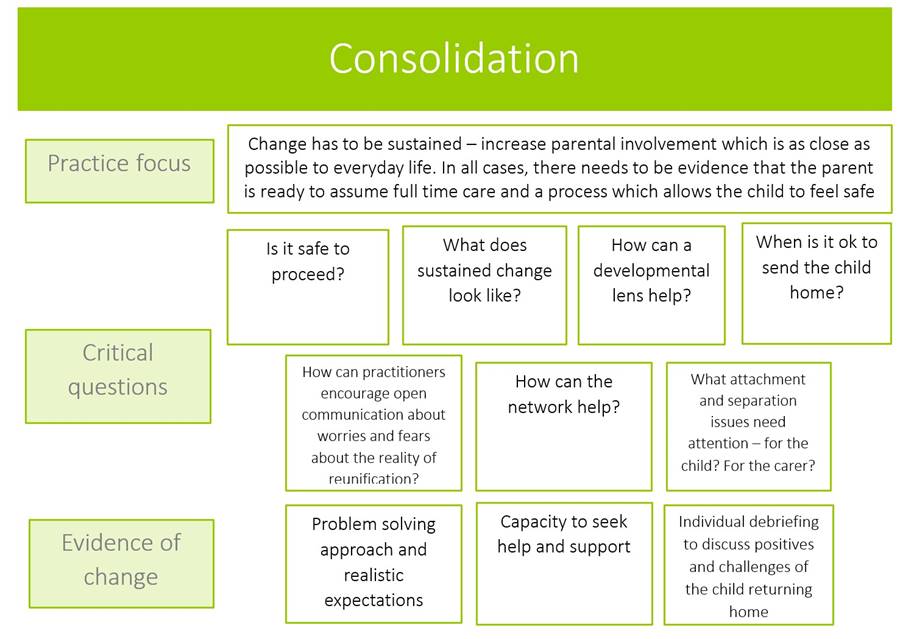


Applying the Framework for Practice
Think about how tools such as The Family Roadmap, The Safe Contact Tool, The Three Houses and Circles of Safety and Support can help to inform the process of reunification. The following diagram provides prompts to help apply the Framework for Practice when using the Reunification Pyramid to work towards reunification:
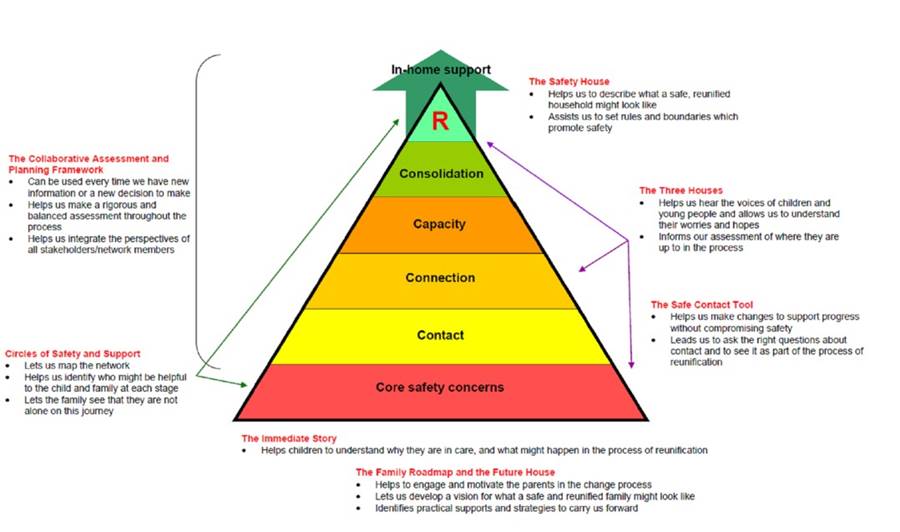
Keep the elements of the Aboriginal and Torres Strait Islander Child Placement Principle central to decision making…
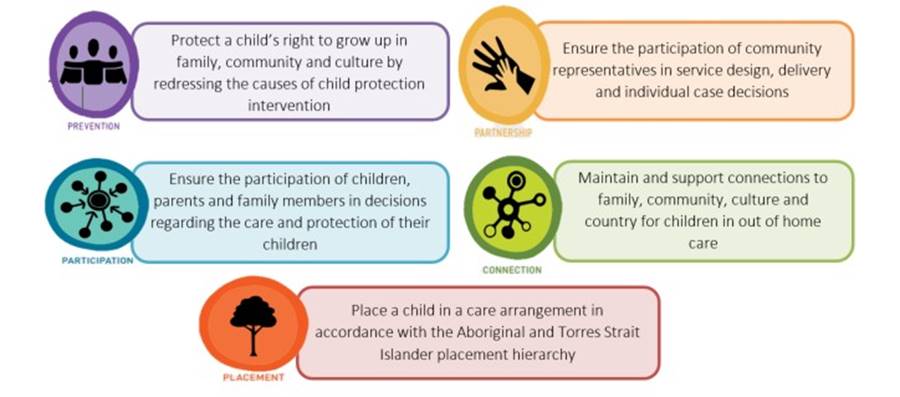
…and apply them when using the Reunification Pyramid
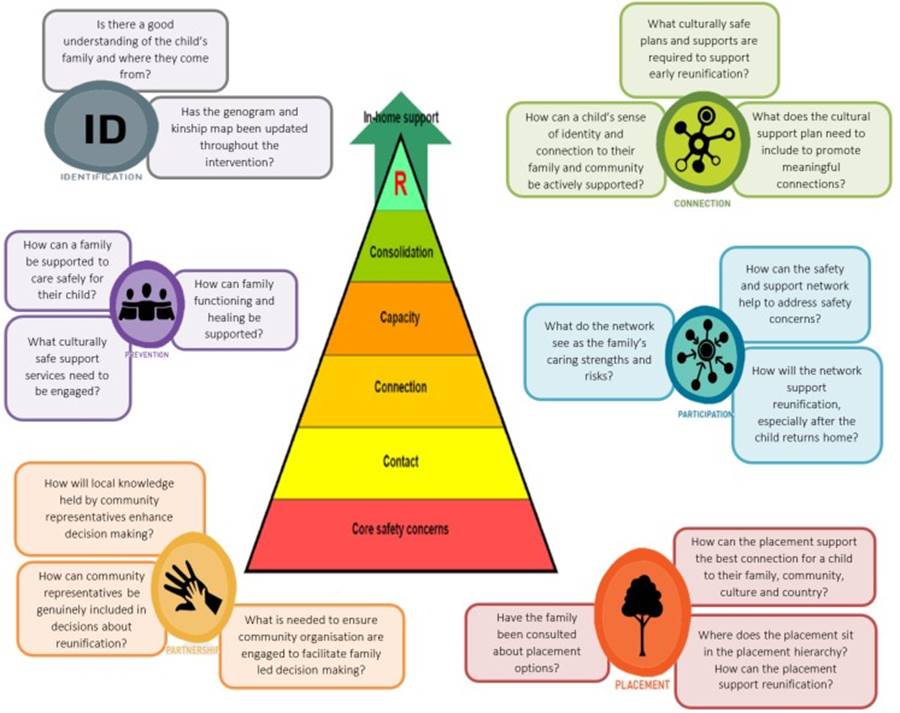
(Family Matters, 2016)
When there are differences of opinion
The Reunification Pyramid encourages practitioners to pay attention to the process of reunification and to leverage the role of the safety and support network to assist and contain families. All members of the network need to participate in the process and agree the way forward.
If there are differences in attitudes, views and actions, listen to understand what is causing the disconnect. Be curious and ask questions about what is seen and heard to try and fully comprehend what is happening and how to try and work through it. Practitioners may need to revisit the non-negotiables and consider what may be able to change. For example, if a parent thinks connection time can be unsupervised but the CSO still sees the need for supervision, take turns to explain each point of view. Work through to find things that can shift and what needs to remain in place. Can there be a change in who is present during contact to provide supervision and ensure safety? Could another venue be considered? Acknowledge parental fear around not being in control of what is happening and consider how these vulnerabilities manifest in anger and aggression.
Differences of opinion may also arise between a CSO and a carer or professional. This could be regarding the timing of reunification or the speed at which case work is progressing. As always, listen to understand what the worries are. Ask questions, listen and find a pathway to solution.
Practice prompt
Use the gradients of agreement scale below to work through any differences of opinion.
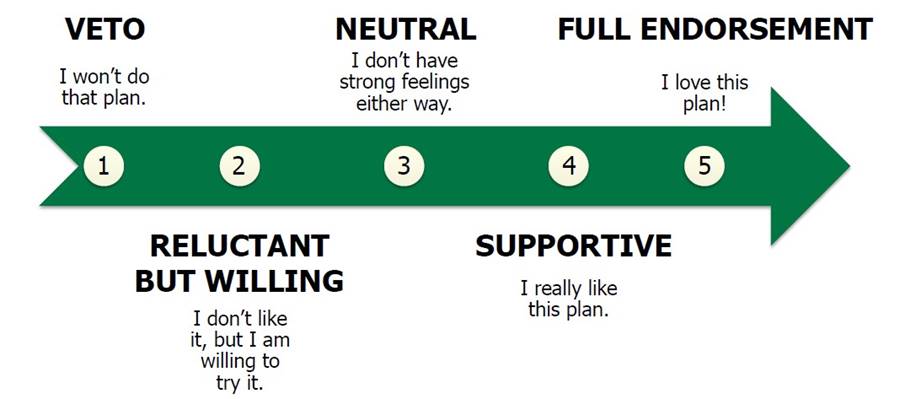
Published on:
Last reviewed:
-
Date:
Content updated for SDM changes.
-
Date:
Page created
-
Date:
Page created
-
Date:
Page created

